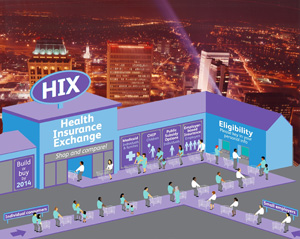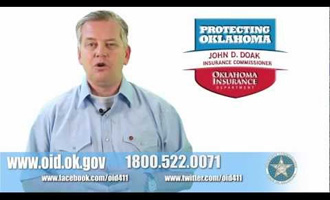 After years of political disagreements and court battles, open enrollment on the new health insurance marketplace is finally upon us. While many Oklahomans, including me, are against the federal law, it is a reality for the time being. If you do choose to purchase health insurance from the exchange, it is extremely important for you to be educated about the process. One wrong choice could end up costing you thousands in unexpected costs.
After years of political disagreements and court battles, open enrollment on the new health insurance marketplace is finally upon us. While many Oklahomans, including me, are against the federal law, it is a reality for the time being. If you do choose to purchase health insurance from the exchange, it is extremely important for you to be educated about the process. One wrong choice could end up costing you thousands in unexpected costs.
The Basics
The health insurance marketplace, or exchange, is a website that allows you to learn about and purchase health insurance. But remember, you can get assistance from a licensed agent or broker whether you are buying on the exchange or outside the exchange. If you choose to use the online exchange at https://www.healthcare.gov/, you’ll be asked to enter information about yourself and select your desired level of coverage. Then, you will receive a list of plans you can purchase. This open enrollment period begins Oct. 1 and ends March 31, 2014. For those who enroll before the end of 2013, coverage becomes effective Jan. 1, 2014. You can also purchase health insurance through the marketplace by mail or in-person by downloading the applications online.
Coverage Options
Plans sold in the new marketplace fall into one of four categories: bronze, silver, gold and platinum. Insurers who participate in the exchange must offer at least one silver and one gold plan. The different categories represent what an average enrollee would pay out-of-pocket when he or she receives care. That’s why you need to pay very close attention to which plan you purchase. While bronze plans will have lower monthly premiums, they will have higher deductibles, co-pays and coinsurance levels that will increase your out-of-pocket costs if you need medical care.
The levels of payment, on average, are:
• Bronze: plan pays 60%, consumer pays 40%
• Silver: plan pays 70%, consumer pays 30%
• Gold: plan pays 80%, consumer pays 20%
• Platinum: plan pays 90%, consumer pays 10%
You should also be aware that each plan’s coverage may differ depending on provider network. Out-of-network services may have reduced benefits or not be covered at all, requiring you to pay out of pocket.
All plans must cover these 10 essential health benefits:
• Outpatient services
• Emergency services
• Hospitalization
• Maternity and newborn care
• Mental health and substance disorder services
• Prescription drugs
• Rehabilitative and habilitative services and devices
• Laboratory services
• Preventative and wellness services and chronic disease management
• Pediatric services
The exchanges will also offer catastrophic plans which will only cover you if you require extensive care. Catastrophic plans are available for people under 30 years old and for those with very low incomes who cannot afford other plans.
Exact premiums for coverage will vary from person to person, as they are based upon age, family size and geographic location. In addition, some people may qualify for subsidies based on their income. These subsidies are considered a tax credit, but they will be applied to your monthly premiums.
Enrollment Assistance
I know many Oklahomans are confused about the Affordable Care Act and the health insurance marketplace. Before enrolling through the exchange, I urge you to reach out to one of the state’s 49,000 agents and brokers. These licensed experts, unlike navigators, go through extensive education, testing, background checks and continuing education requirements to ensure they are able to meet the needs of insurance consumers. Please remember that navigators can help you through the application process, but they can NOT recommend a specific insurance plan or sell you insurance.
For more information about the exchanges, visit https://www.healthcare.gov/ or contact the Oklahoma Insurance Department’s Consumer Assistance Team at 1-800-522-0071 so they can connect you with the appropriate federal resource.


